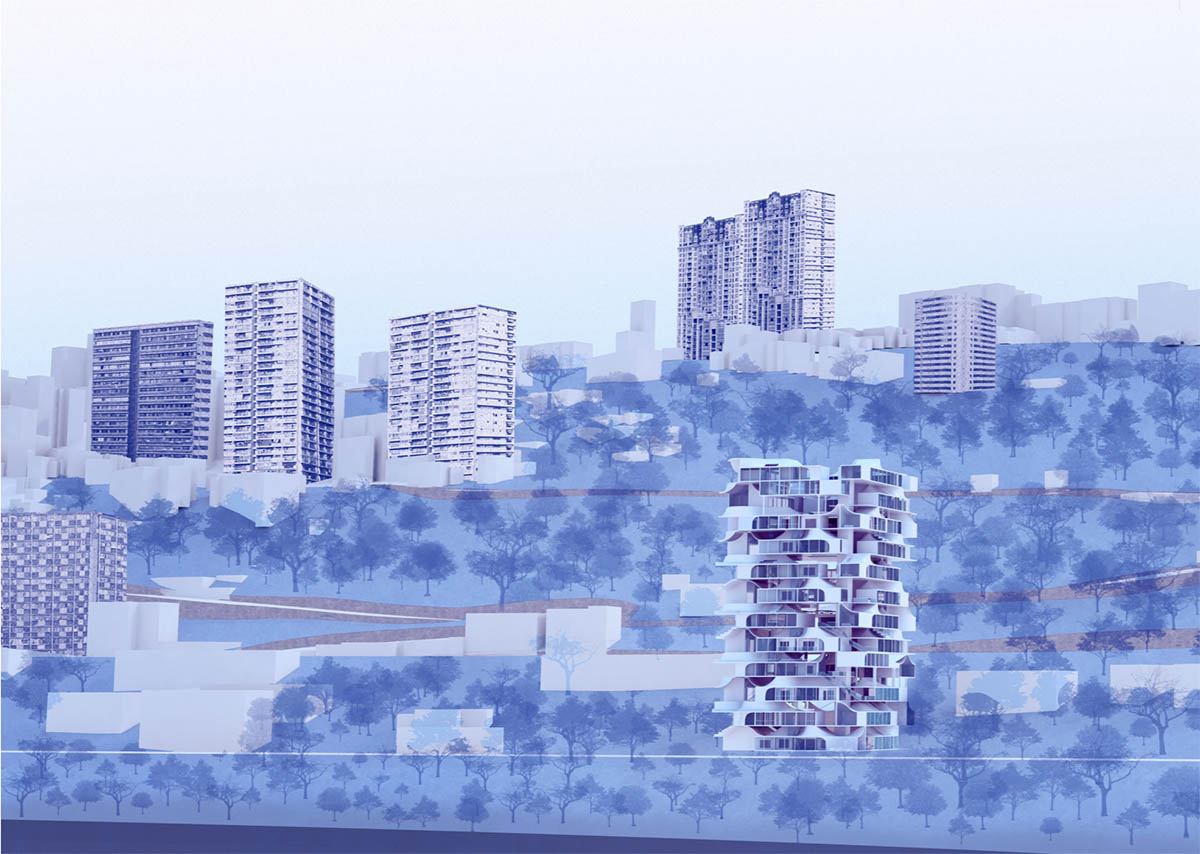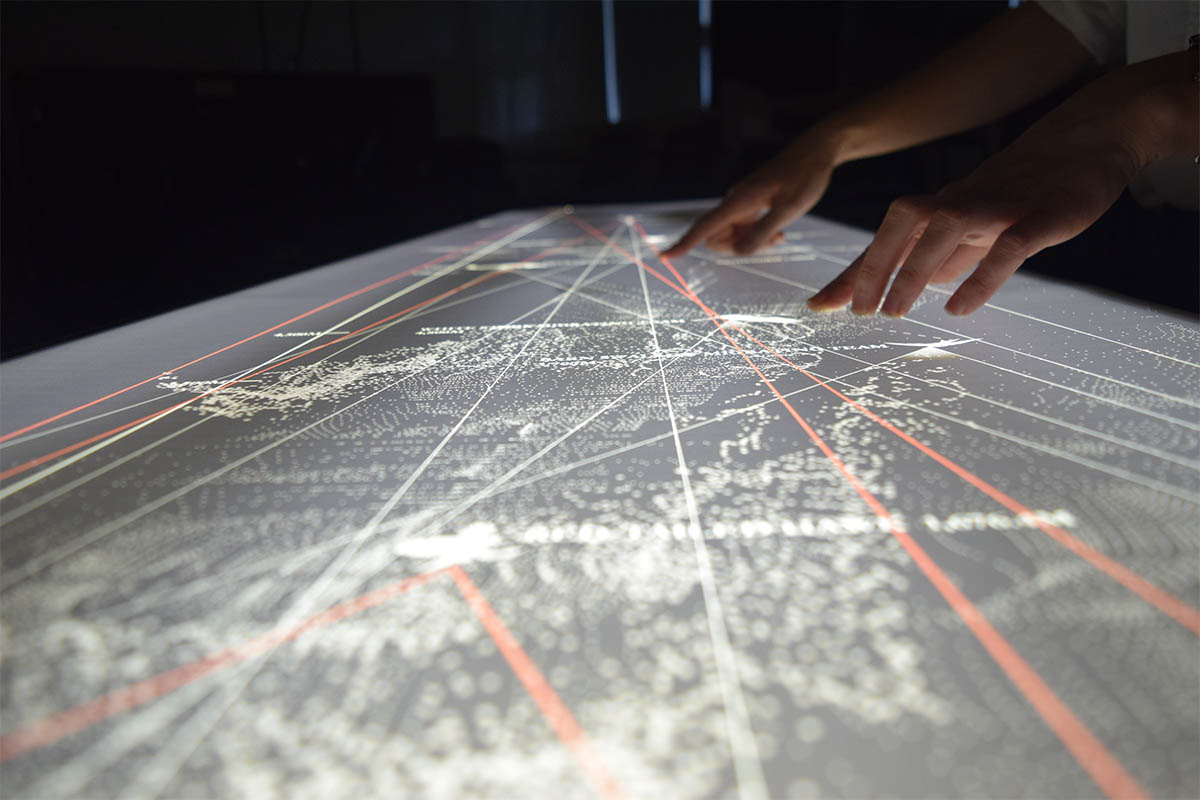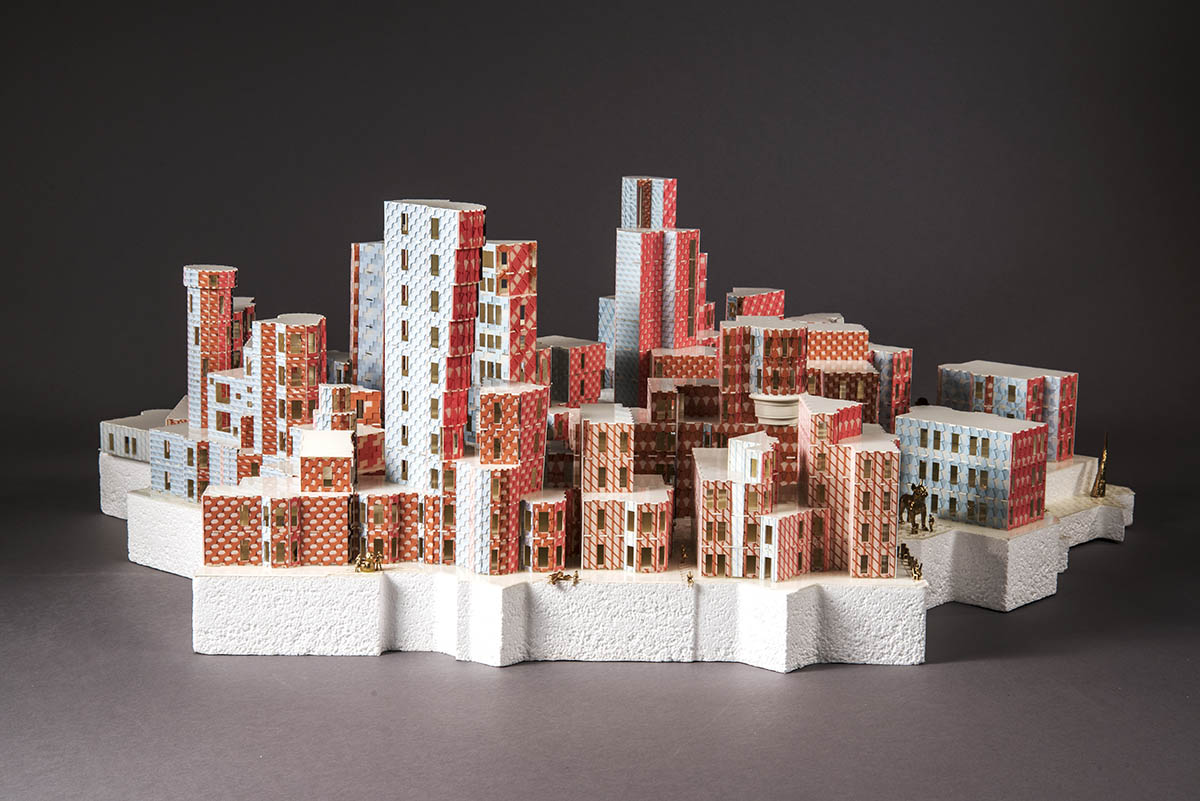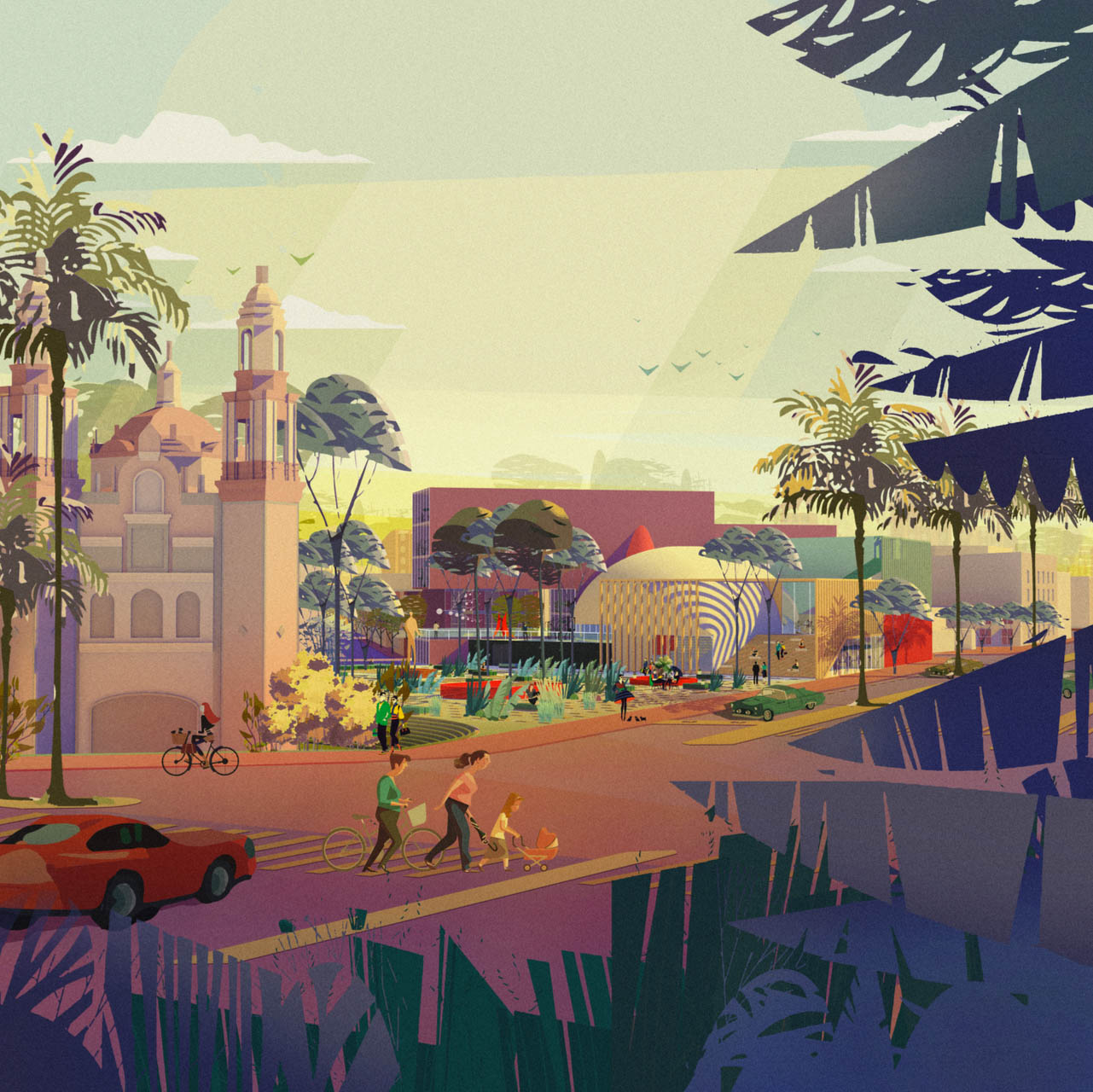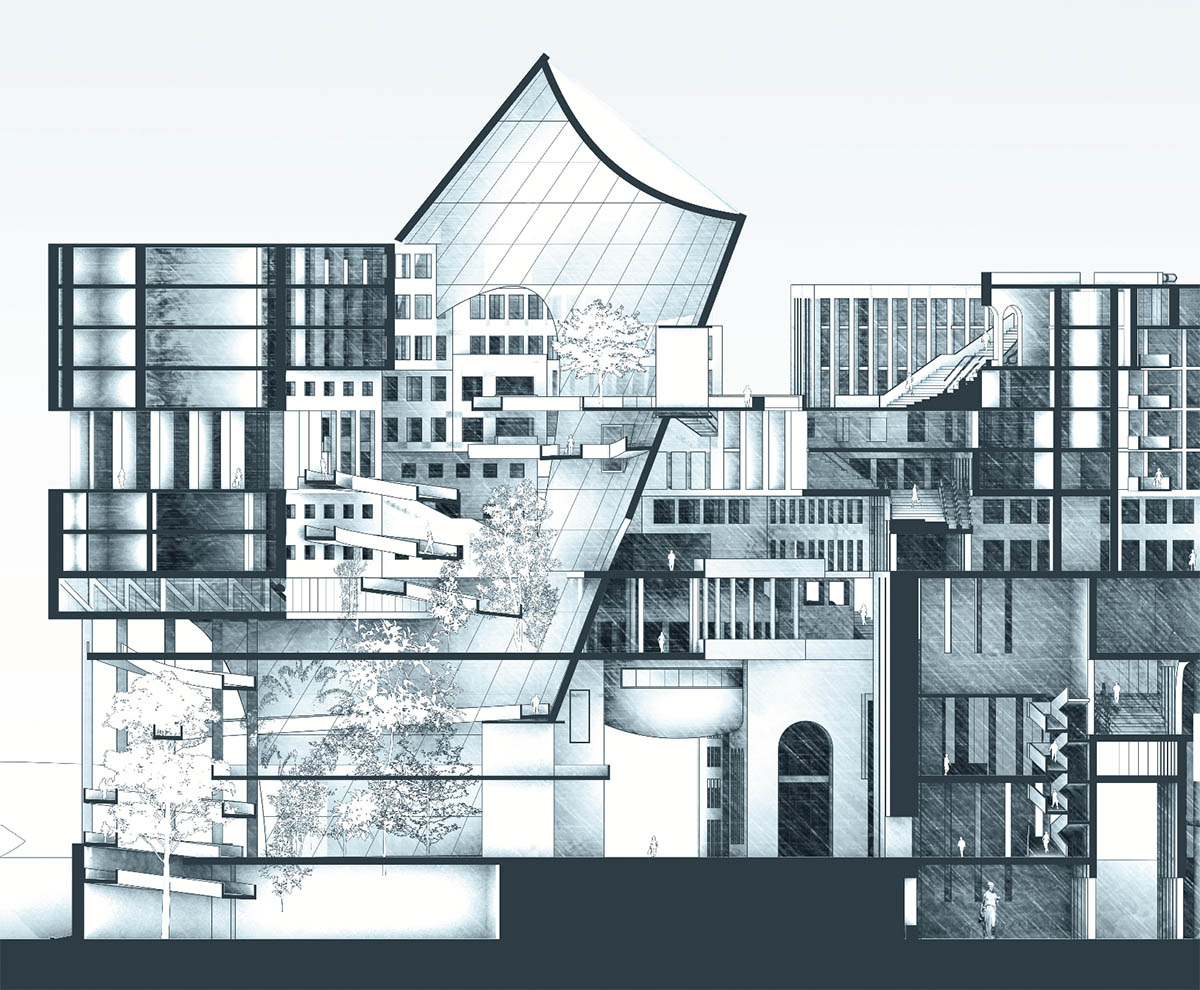Not so skin deep: vernacularism in XL
Ziwei Song (MArch II ’18)
The thesis re-approaches typical developer project in China, and explores the capacity of vernacular image to make effective space in relationship to sequence, perception, exposure and events. The project has its test site in Chongqing, a very typical second tier city in China proliferating with developer projects. Those developers are building XL project either as the “decorated shed”, that uses vernacular roof as the toppers to superficially communicate the culture and completely pursues efficiency, or as) or as the “duck”, which wraps the whole building in the cultural icon and distorts the program to fit its iconic form. Both modes are not only skin deep in communicating the image culture about city and place, but also skin deep in constructing meaningful, comfortable living space. Isn’t there an alternative way of building XL project that goes beyond the skin deep of image culture and woven into the experience of space? The thesis therefore turns to the vernacular cultural roots where developers borrow those cultural icons. The design experiments the capacity of vernacular image to choreograph and make space, replacing the “decorated shed ” and the “duck” mode of the global developer today. It brings the vernacular sensibility of spatial richness to re-approach developer tower scale, altering the horizontal expansion of traditional courtyard into the expanded exploration in vertical living under the challenge of densification. Through this shift in scale, The vernacularism in XL tower addresses three folds of need: the developer’s need for efficient and repeatable floor plates, city’s need of expressing culture and identity, as well as the resident’s need of rich, comfortable, expanded spatial experience that connects them to nature, neighbors, and the active social lives.
Different from skin tower residential tower project that disconnects experience from image culture, those vernacular residential types are great examples introducing the thickness, richness and expansive threshold into the space. The image of roof profiles, garden wall, are associated with place and culture, but at the same time choreograph your experience, organize the program, orchestrate exposure and movement. The thesis extracted the enriched use of those elements, and experimenting them in XL to transform the experience of typical developer high-rise. Specifically, it takes the roof profile, which guides your view to outer threshold , organizes circulatory flow to exterior and differentiates different types of living space. When transforming tower XL, it sweeps up to floor above when needing higher ceiling for social space and two-storey space. The gable wall confining neighbor boundary in vernacular root protects privacy and prohibits unnecessary communication between unit and collective space. The garden wall provides this spatial buffer in certain residential component such as bedroom and working. As to how to construct XL from smaller unit, the design also looks at vernacular typology of temple and guild hall that deploys smaller units to construct a range of scales from small private units to mid scale social chamber to large scale civic space.
Eventually the thesis is imagining this vernacularism in XL tower in the Chongqing river scape, as a projected future of developer tower of decorated sheds together with the new proposal. The project, not longer skin deep, tries to integrate culturally significant image to construct coherent, vibrant and active spatial experience. The roof profile, gable wall and garden wall weaves with each other and meanwhile imagines a new typology of brining multifamily housing with active social mid scale collective space. The final design of the tower builds both on spatial flow of vernacular dwelling that supports flexible, adaptive living components and the viable footprint of developer tower plan. The tower alters the conventionally introverted core to four sides, freeing the central space to collective social space known as the event court. The event court houses various types of social program ranging from theater, foot court, co-working space, sports court, gallery, sculpture garden to urban forest, key to the formation of mini community. It also tries to dissolve the notion of the unit that bounds and confines the living footprint—one family is not only one unit, but enjoys the rich opportunity vertically to eat breakfast on roofscape, to view the unobstructed urbanscape and the active social chamber in the event court.
Turnpike Metabolism: Reconstituting National Infrastructure Through Landscape
Ernest Haines (MLA I ’18)
When one thinks of national infrastructure, the interstate highway system immediately comes to mind. Nearly fifty thousand miles in length, planned and constructed for over half a century, it is the largest contiguous landscape in the United States of America. However, in its current state, the highway disproportionately produces the landscape rather than vice versa. This thesis proposes a set of systems and methods that allow the landscape to actively push back upon and define the way infrastructures are developed in the United States by making landscape formation, composition, and metabolism primary drivers.
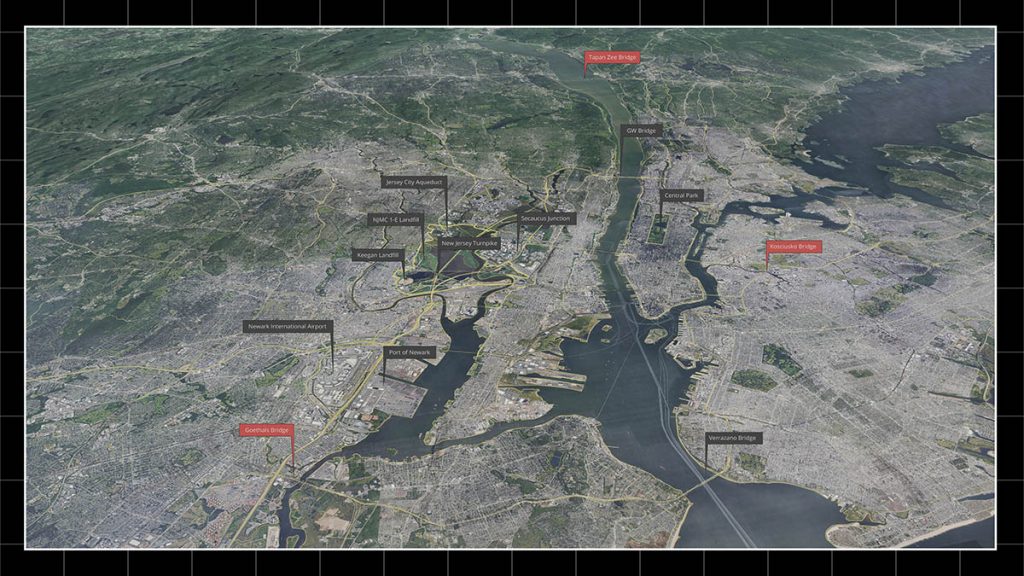
As the issue of “crumbling infrastructure” continues to become more relevant in the face of global instability, there is a priority to rehabilitate our nation’s infrastructure. A proposed consortium leverages the responsibilities and interests of existing government agencies by locating their operations in research stations across the country. These stations collect data, experiment on the ground, and develop standards and guidelines to be used nationally. Research Station #25, in New Jersey’s Meadowlands, is the primary focus of the thesis. Through this site, Turnpike Metabolism explores the ways an active feedback loop between sensing, design, construction, use, degradation, and replacement redefine infrastructural metabolism both locally and nationally in the United States.
Wild: Manhattanism Unhinged
Seok Min Yeo (MLA I ’18)
The Manhattan Grid and its ability to absorb manic heterogeneity emancipates each block into an island of its own identity and ideology, inspiring architectural ecstasy. Conceptual alternatives by the likes of Ferris, Hood,Superstudio,Koolhaas & Vriesendorp, and Tschumi contribute to the island as a cultural ideology and a theorem: Manhattanism
The podium – a straight extrusion of the existing formal logic of the grid – is the datum of reliability that act as a stage for expressions above. Here I posit, that the space in between the podiums, The Street – is the largest contiguous public realm of the island, and it has been neglected from this conversation.
This investigation begins from Ferriss’ “The Metropolis of Tomorrow,” a series of atmospheric charcoal renders produced in 1929, which Koolhaas dubs as the “womb” of Manhattanism. Ferriss’ renders were an imagination of the impact of 1916 Zoning Resolution, which introduced the Sky Exposure Plane and Height District to provide “light and air”to the streets as a public health concern in a growing metropolis. What if this moment played out differently, what if there was an alternative womb that conceived the street not as a constrained two dimensional infrastructure to let light into, but as a three dimensional public realm to be designed?
The three laboratories investigate the parameters built in the key zoning apparatus that govern the form of the buildings – 1916 Sky Exposure Plane in particular – and started to unhinge them in order to expand and thicken the streets. The investigations posit the street and its composition as the catalyst, the public as the agent, and the built form and the expanded public realm as the bi-product. Through the experiments, I seek to challenge the normative understandings of the street as a linear two dimensional element, the horizontal and vertical delineation between the public and the private realm/ownership and the boundaries and negotiations between various stakeholders – the users, designers, and regulatory agencies.
Future of the American City
The Future of the American City project is an urban study initiative aimed at helping cities tackle urgent challenges. Building on the Harvard Graduate School of Design’s unique, multi-disciplinary model, the effort will use architecture, landscape architecture, and urban planning and design to come up with actionable, efficient solutions that take into account community needs.
Research on Miami will form the first phase of the project, a broader initiative intending to also examine the cities of Los Angeles, Detroit, and Boston. The school plans to host a summit to convene experts from each city to create a national discourse on the future of cities and urban life in America.
To engage Miami residents in creating new approaches to address pressing urban issues—including affordable housing, transportation and sea level rise—the John S. and James L. Knight Foundation is providing $1 million in support to the Harvard GSD. With the funding, the school will embed urban researchers in Miami and Miami Beach to better understand the cities’ opportunities and challenges, and launch a multi-year study toward building solutions shaped by residents. Read the full press release.
Researchers at the GSD have been actively connected with the City of Miami and the City of Miami Beach for several years. Since 2012, the school has conducted six courses focused on Miami and held several major events in the city. Expanding on this work, the school will convene a range of experts, policy-makers, and members of the public to contribute to this new effort.
In its research, the school will focus on urban mobility, affordability, and climate change, themes that emerged from a series of previous discussions among its researchers and members of the Miami and Miami Beach communities. Following their analysis, students and faculty will offer toolkits, white papers, and other materials for review and use by city managers, mayors, and other civic leaders, many of whom will be directly involved throughout the study.
The research will be led by Mohsen Mostafavi, Dean and Alexander and Victoria Wiley Professor of Design, as well as Harvard GSD professors Charles Waldheim, John E. Irving Professor of Landscape Architecture, and Jesse M. Keenan, Lecturer in Architecture. The study will include a three-part series of courses being led at the school. This fall, a course will focus on mobility and transit in Miami, particularly Brickell, with a site visit in October 2018. A second course in Fall 2019 will examine the roles of higher education and medical institutions in Miami’s economy, and a third in Fall 2020 will focus on the roles of Miami’s various ethnic neighborhoods in shaping the city’s cultural identity.
Each GSD course will involve 12 graduate-level Harvard students and a professor working in a “design studio,” which involves conducting independent research, then discussing plans with fellow researchers to modify and strengthen their proposals. Each team of students will spend at least one week in Miami to speak with local stakeholders, civic organizations, and political and administrative leaders. Representatives from Miami’s civic and political organizations will provide feedback throughout the study.
Harvard Graduate School of Design’s upcoming Miami research is the first phase of its Future of the American City project, a broader urban-study initiative intending to also examine the cities of Los Angeles, Detroit, and Boston. The school plans to host a summit to convene experts from each city to create a national discourse on the future of cities and urban life in America.
Knight Foundation supports informed and engaged communities by identifying and working with partners to help our cities attract and nurture talent, promote economic opportunity and foster civic engagement. This effort will advance Knight Foundation’s work in Miami focused on building the city’s innovation ecosystem, while fueling entrepreneurship and new ideas. It will also help drive a national conversation about how communities can be more engaged in designing their cities to face the challenges of the future.
For more information, please visit the Future of the American City website.
Kandor Architecture
“Architecture is always the exhibition of a myth,” as a certain critic put it in 1989, and the myth in this case is Kandor—the city that Superman kept shrunken in a jar. Preserved in ethereal suspense, Kandor was obsessively rendered by the sculptor Mike Kelley at the end of his life as colorful casts of glass, resin, plastic, and wax that represented the endless figurations of the mythical city in Kelley’s imagination. Our project relates Kelley’s “Kandors” to an earlier work, “The Educational Complex,” in which Kelley drew and modeled from memory the buildings of every school he had every attended. Just as Superman carried Kandor with him in a jar, so too did Kelley carry a city of educational buildings in his memory—his educational complex. The Kandor narrative was here applied to a specific project situated in Brooklyn: a campus for 2,250 kindergarten through high school students. The buildings were distinct, each representing a comprehensive school program with housing, playing fields, and auditorium, but combine to transform the city into the colorful exhibition of ‘Kandor Architecture.’”
This project was designed collectively by the studio: Esther Mira Bang, Andres Camacho, Chieh Chih Chiang, Feijiao Huo, Haram Hyunjin Kim, Hyojin Kwon, Kai Liao, Shao Lun Gary Lin, Meric Ozgen, Alexander Searle Porter, Noam Saragosti, Cheng Zeng
Client ID : NSyuO-fJxYI4DTUf7zWa-osilclb5E7-qmEzyjuu
Tanuja Mishra (MDes ’17)
In this installation, I have alienated myself from my work and looked at it from the eyes of Artificial Intelligence (AI). The resultant artwork has been developed in collaboration with the algorithm, where I’ve allowed it to generate insights on my work. In turn, I’ve used those insights to further re-interpret the work. My relationship with AI has developed over time, starting from a place of fear and paranoia and growing into an alliance of conditional acceptance, negotiation and occasional empathy.
I’ve chosen four artifacts from my body of work; a photograph taken from a pinhole camera, an abstract ceramic sculpture, a fragment of a process-based sculpture and pieces of electronics and related components from my prototyping tool-kit. The artifacts have been chosen to highlight the inadequacies in the predictive models inbuilt within AI. These discrepancies bring forth a dissonance between what is perceived directly by looking at the artifact versus what is perceived through the mediation of AI.

A fragment of a process-based sculpture
The viewer is instructed to access the installation through the interface of the smartphone. The voice of the algorithm is coupled with animated visual expressions to convey AI’s understanding of the artifact. The visual expression incorporates fragments of a woman’s body to reflect not only my own frame as a woman artist but also the experiences of AI that is learning from an internet replete with images of women’s bodies.
Landscape Architecture IV
Michelle Benoit, Daniel Berdichevsky, Meredith Chavez, Ana Garcia, Mengting Ge, Yanick Lay, Charlotte Leib, Mengfan Sha, Marisa Villarreal
Urban Villa (Contemporary Triple Decker)
Claire Djang (MArch I ’19), Alexandru Vilcu (MArch I ’19), and Andrew Bako (MArch I ’19)
“Moving Things Around: Exploring Rossi’s Scientific Theater”
Jianwei Shi (MArch I ’17)
Heterogeneous Culture and Heterogeneous Archetypes of Public Buildings and Spaces
Mexico City is a city with very diverse culture and history. Different architecture and physical space from different period of history were still preserved on this land. The very ancient one is Aztec culture, the pyramid is one of its classic memorable archetypes. For the Hispanic culture that conquered the Aztec people, it laid a solid foundation for the form of historical center of Mexico city – Grid structure + Courtyard residential + Public Plaza with church; During Porfirian Era, the government leads the fusion of Amerindian, Hispanic and French Culture through improving urban environment by learning from Paris. The 20th century has witnessed a fast urban expansion and modernization. A lot of modern towers, public infrastructure and high-rise residential neighborhood took place during this period of time. The map shows heterogeneous archetypes of historical and modern buildings that are born out of the heterogenous culture.

Reference: Analysis on Archetypes and Elements of Alameda Central Park
For a building that is going to be located at the crossroad of these different urban environment and try to reflect upon these different culture physically, it will be very interesting to first look at how these different archetypes of buildings and spaces shape the public realm. Here, the Alameda central park area just beside the site is chosen as the reference. The Alameda central park is the largest park in the historical center of Mexico city. From the analysis on the archetypes and elements of park area, we can see how these diverse elements work together to provide a variable and energetic public space. Trees and canopy providing shade, linear promenade providing sightseeing route connecting different public programs, smaller plazas for outdoor exhibition, churches for religious event, courtyard for shops, cafe, museums. All these different elements and archetypes not only internally provide variable spaces, but also externally collaborate together to shape a convivial urban area.
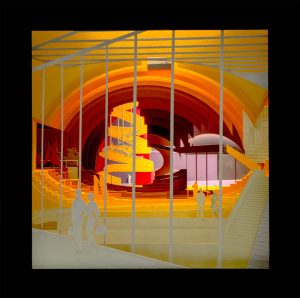
Archetypes Internally Designed for the Cultural Programs and Externally Hybridized for the Plaza Zarco
Learning from the previous analysis, when zoomed in at the Zarco plaza, the main idea is also try to use different archetypes and elements to internally provide spaces for different programs and externally interact with surrounding environment to shape the plaza. The internal organization is using the dome as a heart of building that function as the spacious lobby and temporary venues. All the other archetypes of objects are respectively connected to the lobby forming different openings in the dome shell. Different archetypes provides spaces of very distinct quality. It makes you feel like, from the lobby, the heart of the buildingJianwei Shi (MArch I ’17), you can enter diverse and different worlds. Externally, different objects are hybridized with other archetypes to interact with surrounding environment. Dome distorted into a cone that form the entrance of the building and communicates with the church San Hipolito. The box turns into stairs with lattice cover to allow people sit and rest and see the plaza, etc. The building somehow is orchestration of multiple elements.
Ark, a Plural Whole
Konstantinos Chatzaras (MArch I ’17)
Accepting pluralism as a contemporary zeitgeist and the city as its inherent expression, a model that escapes from pure historical continuity should be studied. Athens therefore serves as the battleground where this pluralism is most evident; it is a polis that incubates substantial history filled with ruptures rather than continuities, conquerors rather than interchanging rulers, and a massive shock produced by modernity due to the lack of resistance as such that was employed in other historic cities. The tragedy of histories and styles sets the stage for a peculiar dance between Classical, Roman, Byzantine, Renaissance, Ottoman, Neoclassical, and modern cultures, all performing in the same play. This combination blurs the sense of time and space: periods that were once sequential have become simultaneous. Iconographies that have remained pure invade each other.
